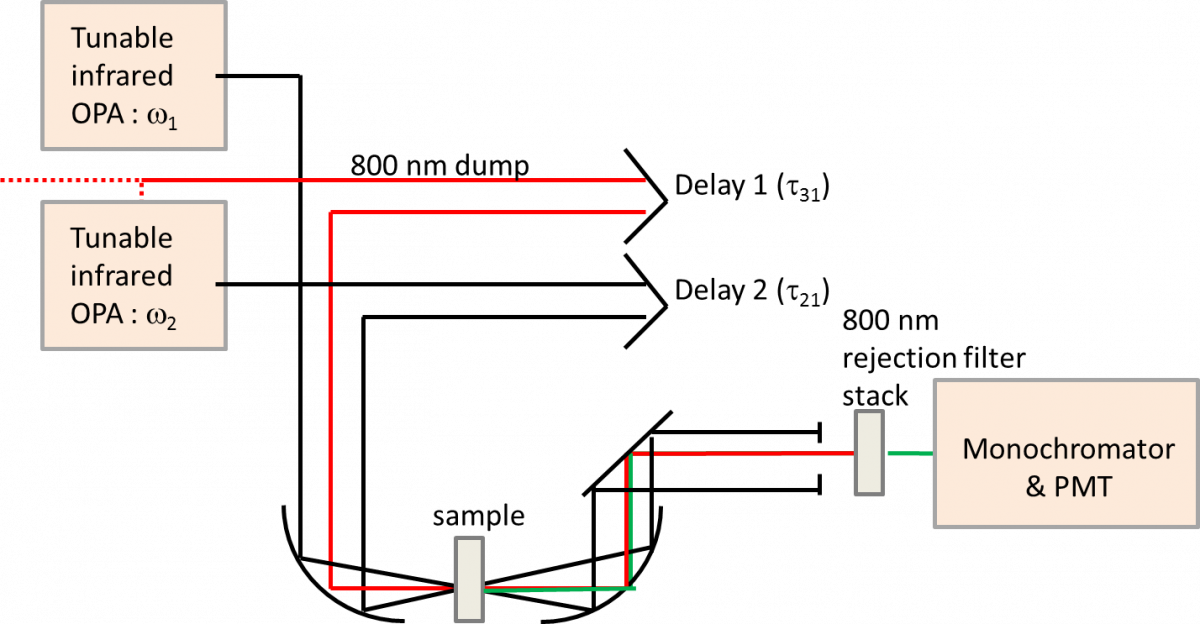The Wright group does mixed frequency-time domain spectroscopy. We scan our laser frequencies rather than use a broadband source and heterodyning to determine frequency components in the time domain. Since this is a less common method, we do a large amount of method development in the group. In the past this has included describing Doubly Vibrationally Excited (DOVE), Triply Vibrationally Excited (TRIVE), somewhat like the mixed-domain analogue of 2D-IR), and Triple Sum Frequency (TSF) Four-Wave Mixing pathways. We have demonstrated mixed-domain manifestations of coherence transfer, quantum beating, and higher order spectroscopies. Our experiments are constantly evolving to suit the problem at hand.
For example, the Picosecond table looks like this when in a TSF setup:

The OPAs provide scannable frequencies in the mid-IR and 800 nm light from the regenerative amplifier upstream, or from an OPA, provides the electronic transition. In TSF the two OPAs would be tuned to the same frequency range. However we can easily switch to other setups. Retuning one OPA to higher frequencies than the other and changing the geometry of the beams into the sample allows us to do DOVE experiments instead. We can also eliminate the visible light entirely and split one OPA into two beams in order to do TRIVE experiments. Sometimes it is useful to collect Coherent Anti-Stokes Raman spectroscopy (CARS) data, and in that situation we can allow the signal and idler frequencies within the OPA (unused currently) into the sample. We also have put motors onto the sample stage in order to collect spatial (imaging) scans. We also have a cryostat we can use if it is necessary to keep a sample at low temperature. These parameters allow us to do widely varying experiments within one space.
